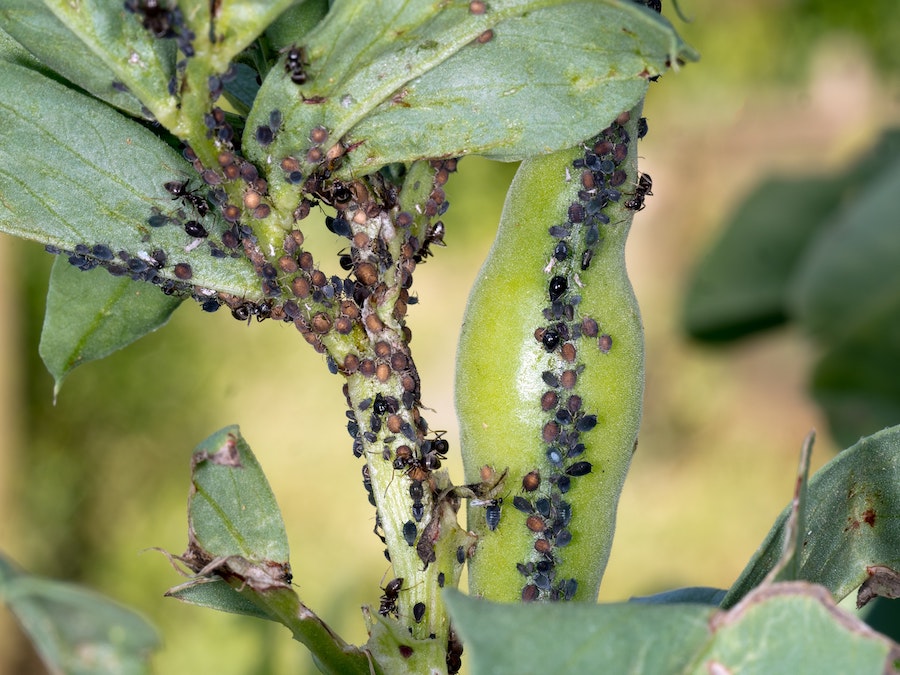3 top tips for outsmarting garden pests
As you get ready to sow, plant and re-arrange your vegetable beds and flower borders, now it the time to take steps to outsmart the pests that can so often ruin your crops and leave plants in tatters.
There are a number of ways you can do this – cover vulnerable plants, put nuisance insects off the scent of prized crops, or simply install some sacrificial flora and fauna which will attract pests to them and away from other varieties.
Here are the tips and tricks you need to know about…
1. Use smelly plants

The smell of marigolds repels whitefly
Pests can often be confused through scent, or simply don’t like the smell of certain plants. You can repel whitefly from valuable crops by planting French marigolds, Tagetes, next to them. The whiff of garlic and alliums, which are ornamental onions, can also keep pests at bay generally. Mixing highly scented plants together makes it more difficult for pests to find their favourite target. The strong smell of catmint, Nepeta, can deter flea beetles, while hyssop and mint put off cabbage white butterflies. Plant hedging barriers of fragrant plants such as lavender, hyssop, rosemary or southernwood around your whole vegetable plot to mask the scent of your veg from pests.
2. Create barriers

Place grit around plants to stop slugs in their tracks
Place a barrier of grit or eggshells around plants which are frequently targeted by slugs and snails, such as hostas and lupins. Cover vulnerable young vegetable plants with fine-mesh crop-protection netting, or even old net curtains, and protect new brassica plantings with collars of horticultural fleece to stop cabbage root fly in its tracks. Cover newly sown carrots with horticultural fleece to deter carrot fly.
3. Use sacrificial plants

Nasturtiums are a magnet to caterpillars
It may be worth losing some plants, in order to keep others. If you want your beautiful hosta leaves to remain undamaged, try planting Chinese lettuce nearby, which slugs also love – so this will hopefully give them enough food to feast upon without reaching the hostas. But remember to go on a slug patrol too and remove any of the little critters you spot on the sacrificial plants, to stop them breeding.

Garlic will help ward off pests in the vegetable garden
Grow nasturtiums and garlic to deter aphids from attacking your vegetable crops. Cabbage white caterpillars also love nasturtiums, so you might want to plant a row of them as an alternative menu to cabbages and broccoli, which the caterpillars would also devour. Some predators prefer certain varieties of veg to others. Slugs, for instance, are partial to the autumn-sown onion variety ‘Buffalo’, so if you mix this in with other onion types, the rest may escape relatively intact. Other sacrificial plants may include broad beans to attract red spider mite, nicotiana to lure whitefly, and potatoes to provide a feast for mealy bugs. You will have to dispose of these plants once the pests have taken hold, but at least this method should leave other crops untouched.
The Press Association
Latest posts by The Press Association (see all)
- 5 new books to read this week - November 23, 2024
- 3 easy Mary Berry recipes to make this season - November 22, 2024
- In Pictures: Party stalwart kept New Labour in touch with traditional supporters - November 21, 2024
- 6 easy indoor exercises to try this winter – and why they are good for you - November 19, 2024
- Martin Clunes: I can’t afford to retire – I’ve got too many horses - November 19, 2024





















